Prague boasts dozens of marvelous routes more than suitable for a Wednesday Walk. Exploring Vyšehrad is the top choice, especially when it's covered in a snow blanket. Formerly a castle steeped in old Bohemian myths and legends, and later a fortress that never served its intended purpose of defending Prague, Vyšehrad is now one of the best places in Prague to hang around or meditate. Perched on a rock above the Vltava, it used to mark the southern edge of Prague for centuries, now defining the boundary of the historical city center. Join me as I take you around and share bits of the local myths. Let's start our journey by entering through the Tábor Gate in the southern part of the Baroque wall. You can easily reach it by metro; get off at the Vyšehrad station and follow the signs.

I appreciate the distinction between the inner and outer portals' appearances. A rear view of the gate we've just passed offers another perspective.

A quick side note – darkness sets in around 4 pm during this time of the year, so despite wrapping up my workday early, all the pictures are night shots. Darkness combined with snow enhances the atmosphere and suits Vyšehrad exceptionally well.

Following the trail, we come across a touristy bar before encountering an unexpected institution in such a fancy site—the Jedlička Institute. It was established in 1913 as the oldest facility dedicated to caring for disabled children and adults in 1913. This building serves as a school and kindergarten for kids with physical disabilities and combined physical and mental challenges.
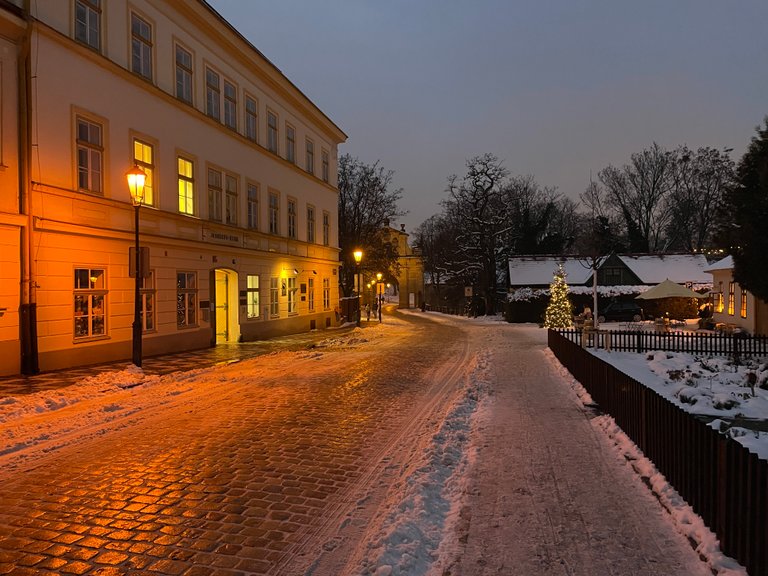


We've wandered between the fortress and the outer fortification wall so far. This is the fortress wall and the Leopold Gate, named in honor of Leopold I, Holy Roman Emperor.
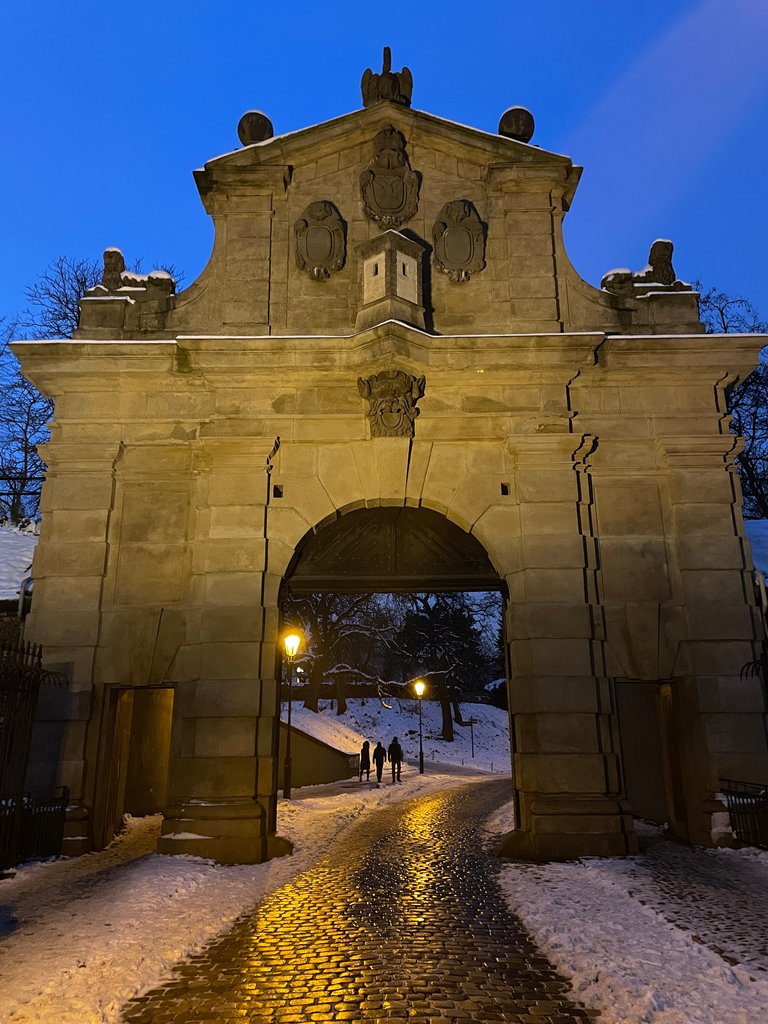
And now, we step into places with thousands of years of history. Just outside the gate, the Rotunda of St. Martin from the late eleventh century lures everybody's attention. Embedded in its wall is a cannonball—a remnant from when Vyšehrad faced shelling by the Prussian army in 1757. Can you spot it in my photos? By the way, the rotunda remains a place of worship to this day.
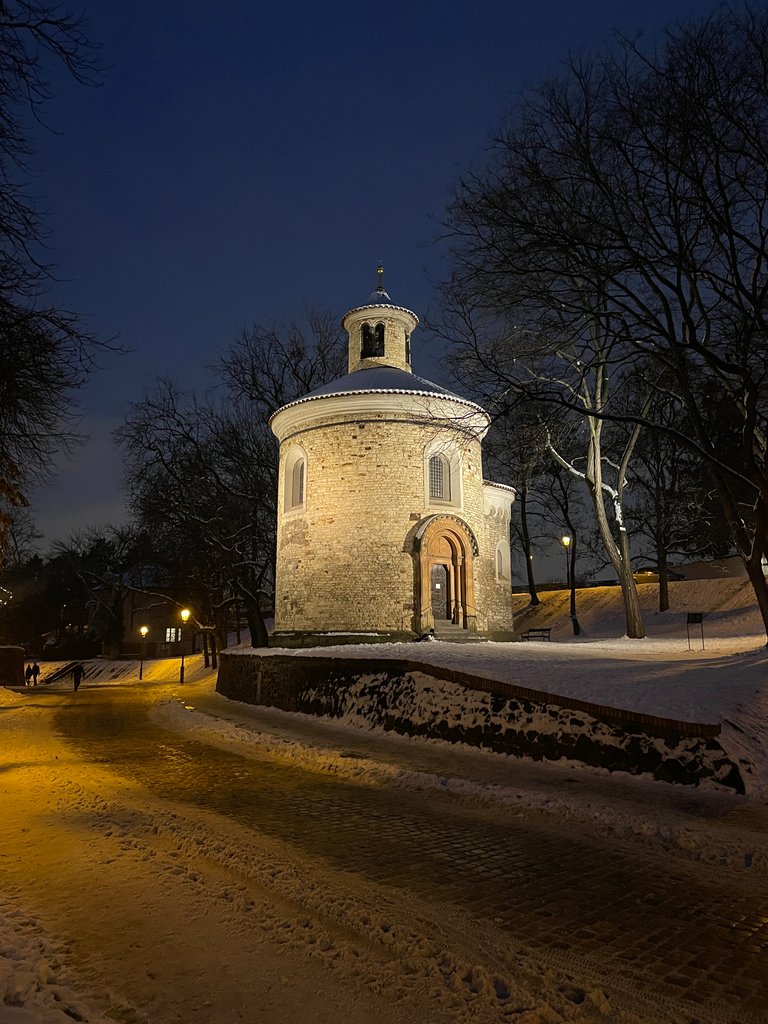

I mentioned that Vyšehrad is a place to relax. No true Czech could unwind without downing a pint or two—call it beer yoga if you like. Anyway, welcome to Na Hradbách (literally On the Rampart) just next to the rotunda, a fantastic cultural venue, bar, and café, quite possibly the only bar in Vyšehrad where the locals actually go. In its vast garden, you can catch regular concerts, literary events, and alternative theatre performances. It might look a bit blunt without the usual crowd, but let's, at the very least, enjoy the view of Prague.

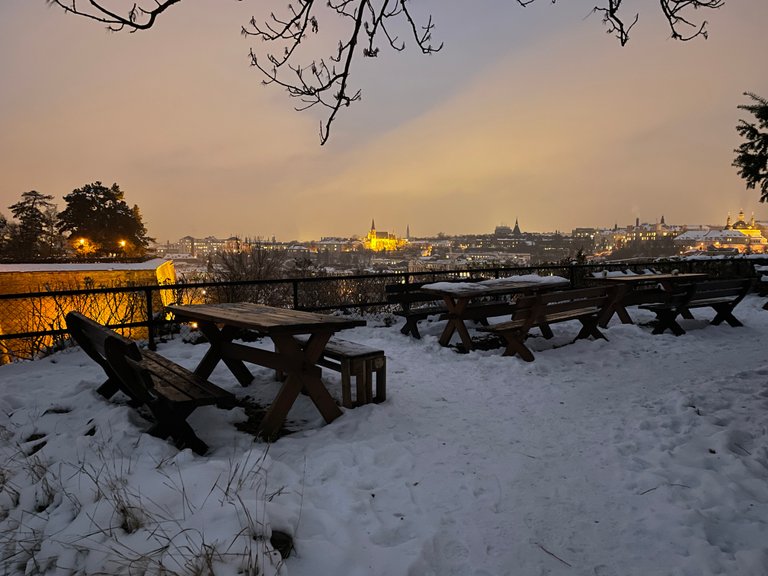
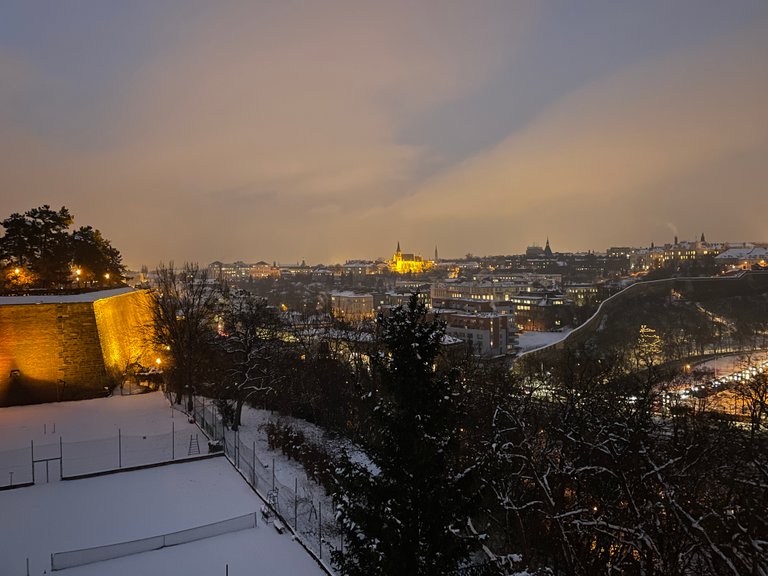
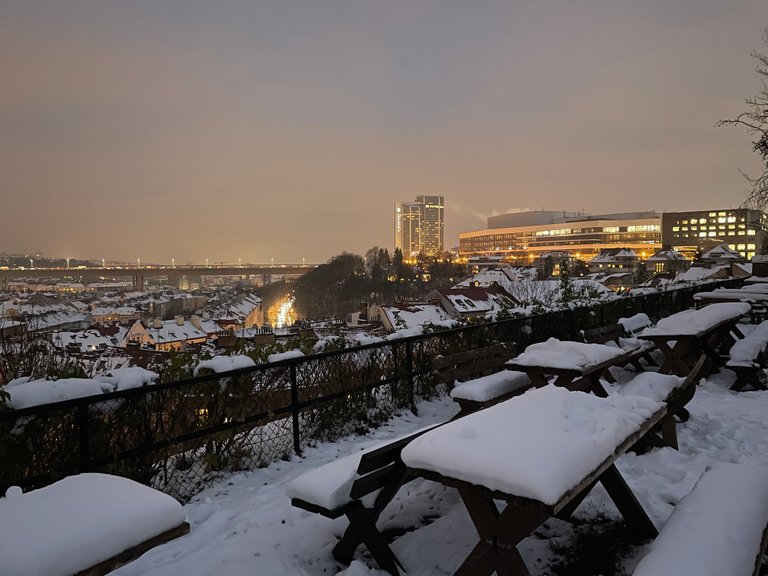


Unfortunately, I was a bit behind schedule. I didn't want to march somewhere when the temperature dropped far below zero. So instead of some beer sampling, let's cross over to the other side of Leopold's Gate and walk along the ramparts, but on the ones that lead towards the river.
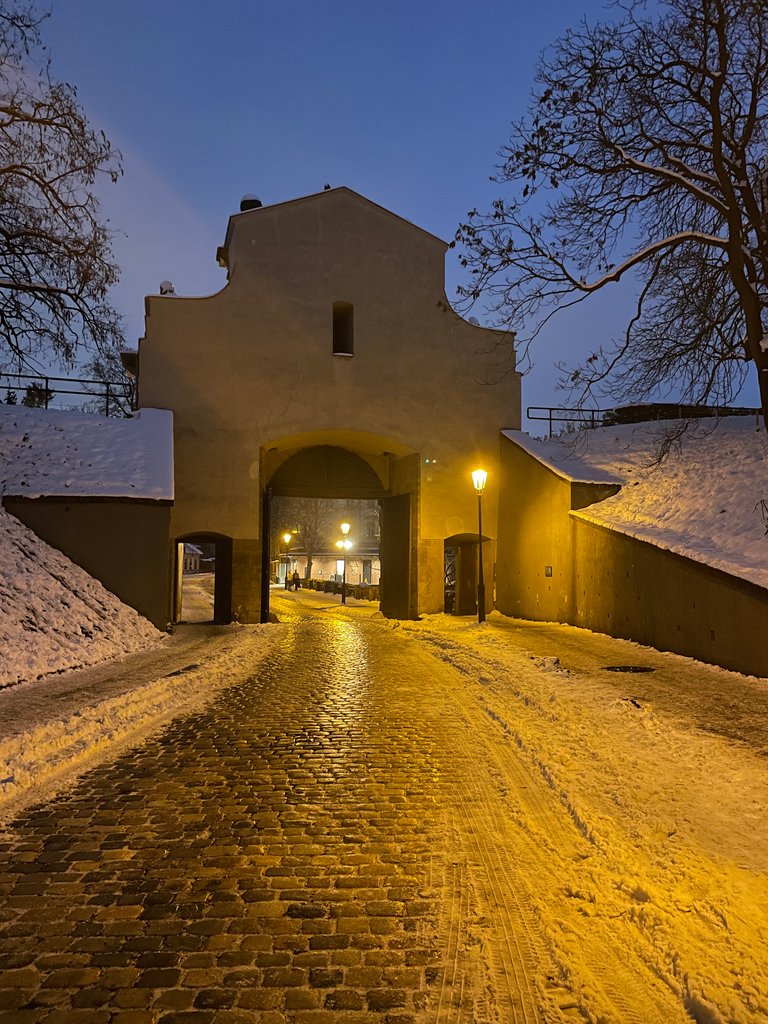
This is usually one of the top lawns in Prague, smooth as a cashmere carpet. It’s still somewhere underneath all the snow :)

The ramparts.
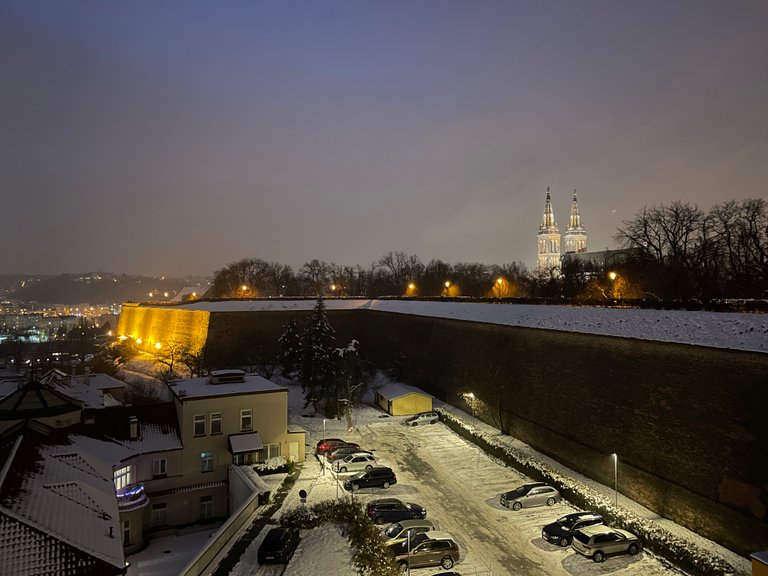
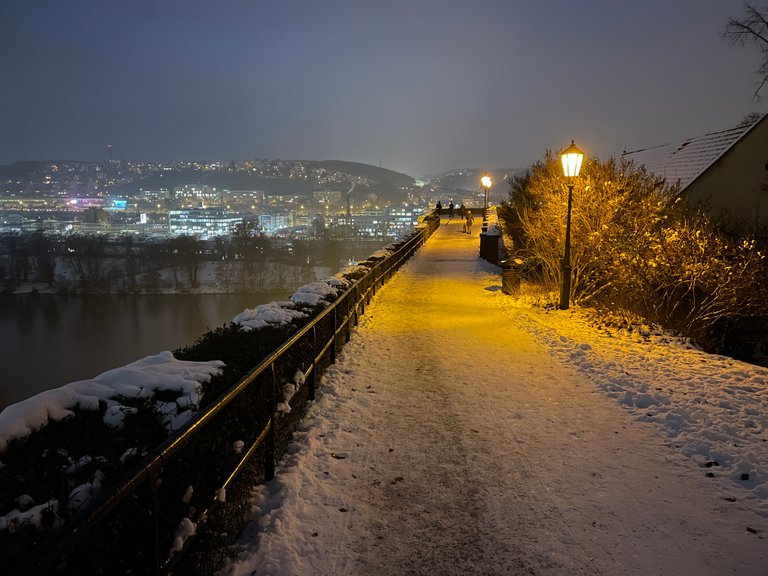
The Vltava.

The seemingly lifeless sticks are vines that belong to the Vyšehrad Chapter, established in 1070 when the royal seat shifted from Prague Castle to Vyšehrad Castle.

Ah, yes, I encountered an angel, a devil, and that's St. Nicolas in the middle. We have this tradition where, on the 5th of December, one day before the saint's day in the Catholic calendar, these three figures roam the streets, rewarding well-behaved children and admonishing the spoiled ones. However, in the Vyšehrad Chapter, they adhere to the 6th, so the gang appeared there today instead.

In the mid-19th century, the Czechs realized their lack of national identity. People had abandoned Czech as their language and got disconnected from their traditions and history. This void spurred the emergence of the National Rebirth movement. Unfortunately, while aiming to resurrect the national spirit and revive history, we inadvertently created some chapters, filling in blind spots. These statues from 1898-1897 demonstrate that, depicting old-bohemian myths as real events.

The Maidens' War story is explained in this older post of mine, where I visited a brewery which names its batches after its characters.
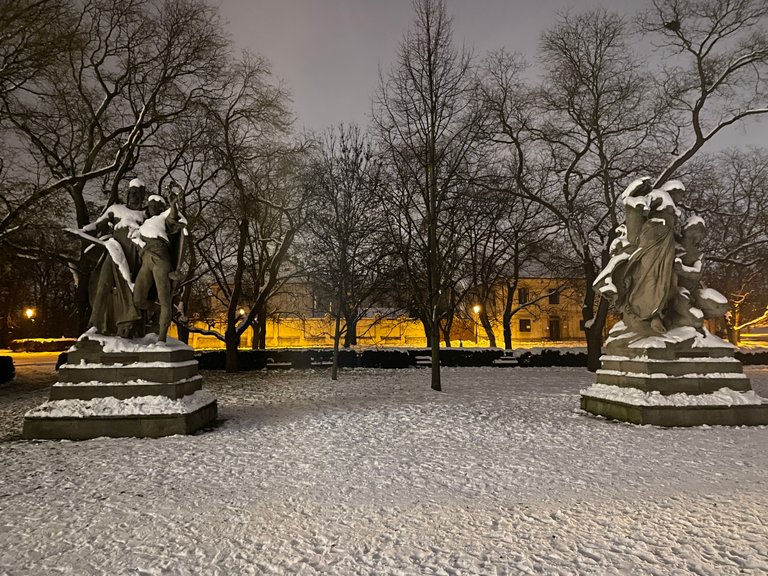
These two figures are Libuše and Přemysl, the legendary 8th-century founders of the Přemyslid dynasty. According to the myth, Libuše resided in Vyšehrad and could foretell the future. She is said to have prophesied about Prague: "I see a great city whose glory will touch the stars." However, historical evidence contradicts this, indicating that Prague and Prague Castle are older than Vyšehrad.

The Basilica of St. Peter and Paul is the most significant church in Vyšehrad, and not only thanks to all the spotlights. It was founded as a chapter church in 1070 when the royal court moved there. However, it was a small church that grew to its present size only after Baroque reconstructions at the beginning of the 18th century. The current appearance is the result of a late 19th-century neo-Gothic rebuilding, so the basilica suffered a similar fate to the Powder Tower, which I covered in last week's entry.
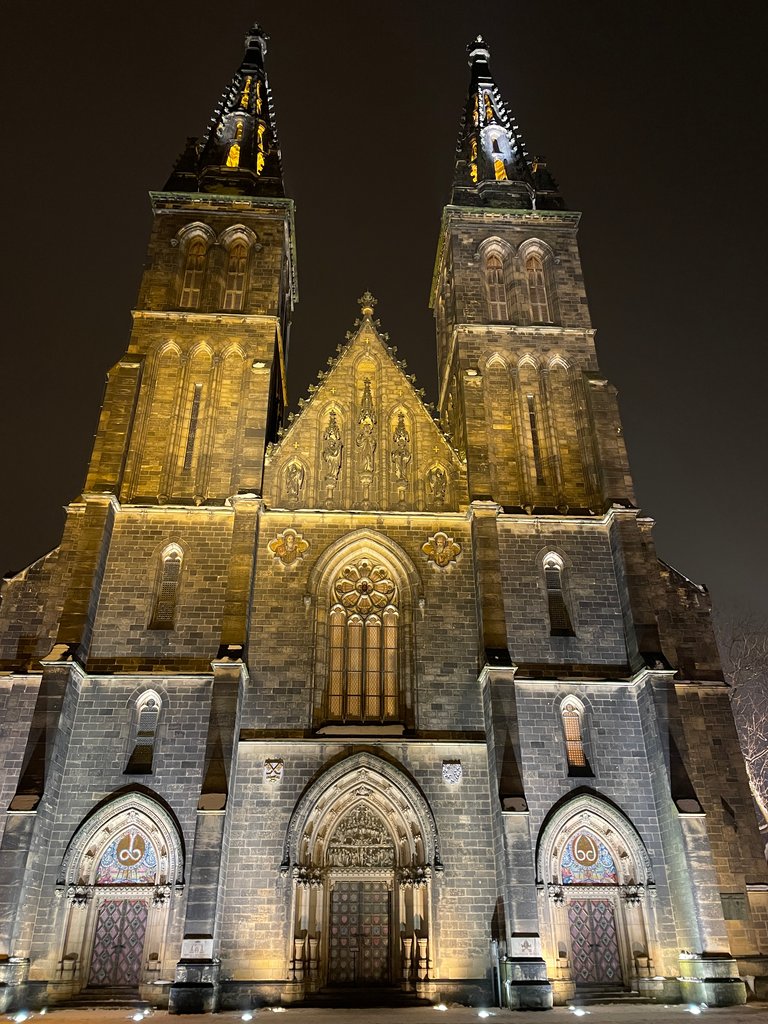
Adjacent to the basilica lies a VIP cemetery, and I'm not joking—its name, Slavín, shares the same root as the Czech word for fame, "Sláva." Almost every OG of the National Rebirth movement rests there, probably disapproving of me writing this post in a foreign language. Among the world-know notable figures, you'll find composers Bedřich Smetana and Antonín Dvořák, Nobel Prize winner in chemistry Jaroslav Heyrovský, and the most prolific goal scorer in the history of football, Josef Bican.


Saint Ludmila, the mother of the patron saint of the Czech country, Saint Wenceslas.
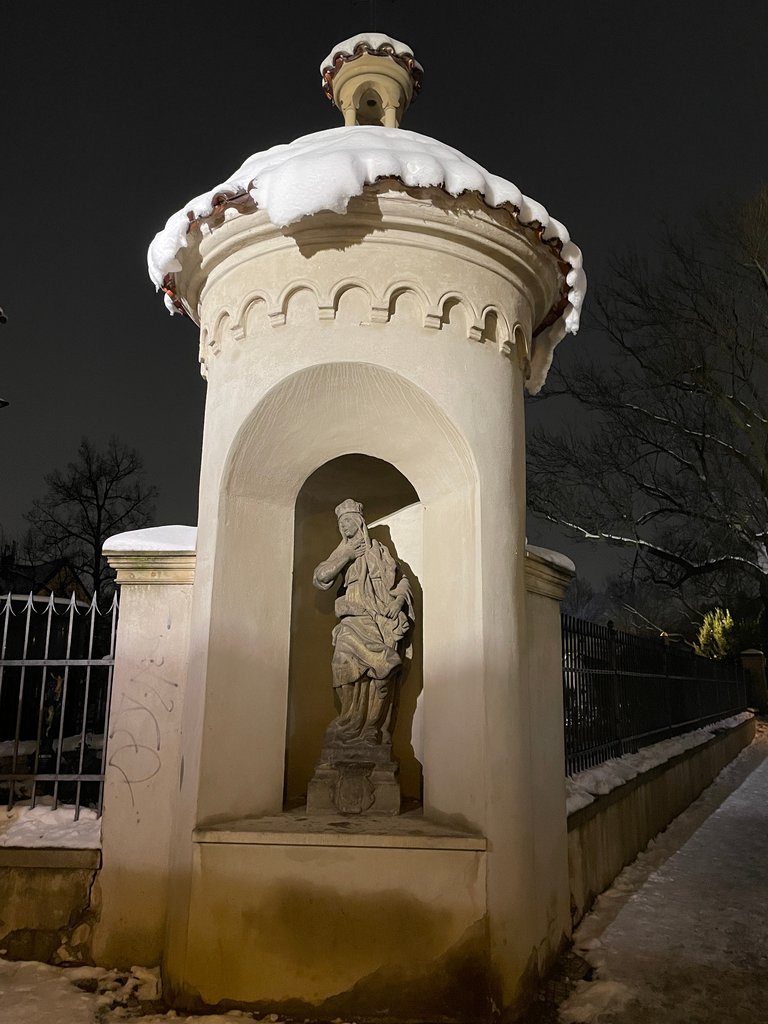
This is a lesser-known side road from Vyšehrad down to the Vltava River. In the background, you can see the glowing Prague Castle.
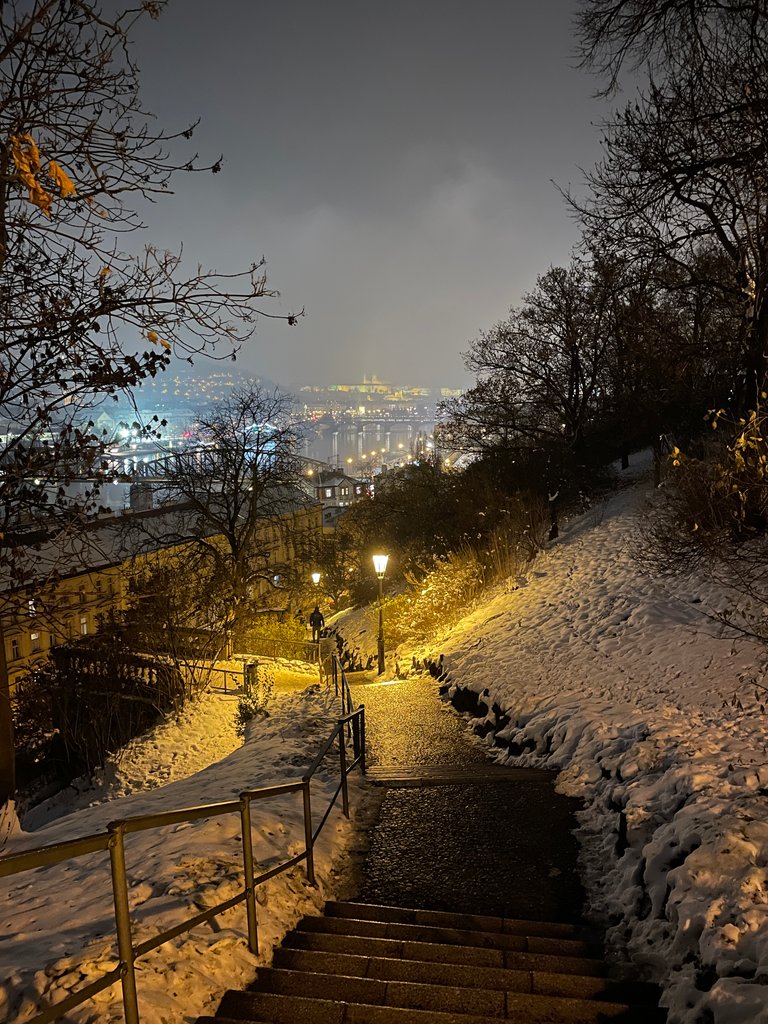
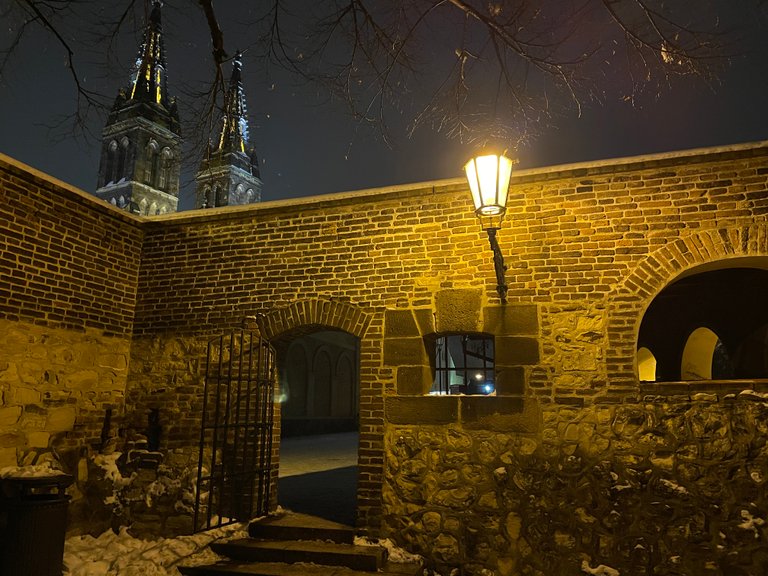

St. Wenceslas cannot be missing in such a place :)

The Vyšehrad summer amphitheater was established on the ramparts in the 1990s and is performed from May to September when the weather is favorable.
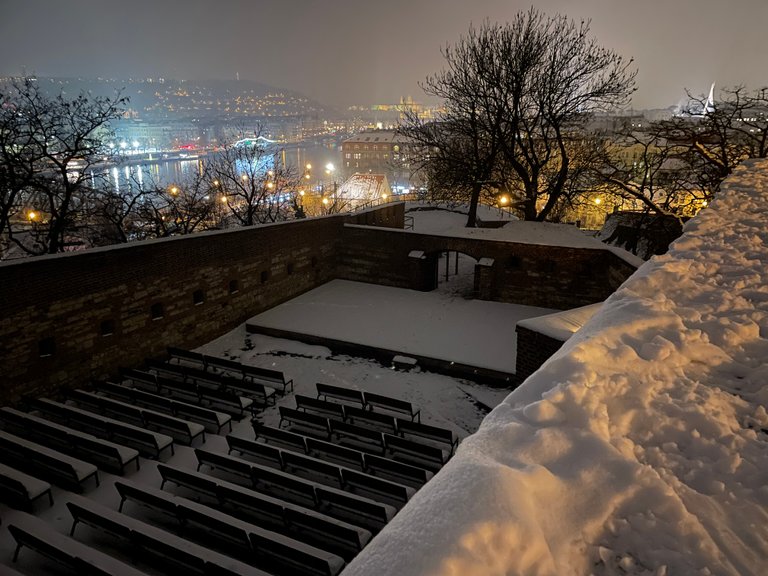
As there was no show today, I could at least enjoy an exhibition of animal snowmen.




New Provost Residence
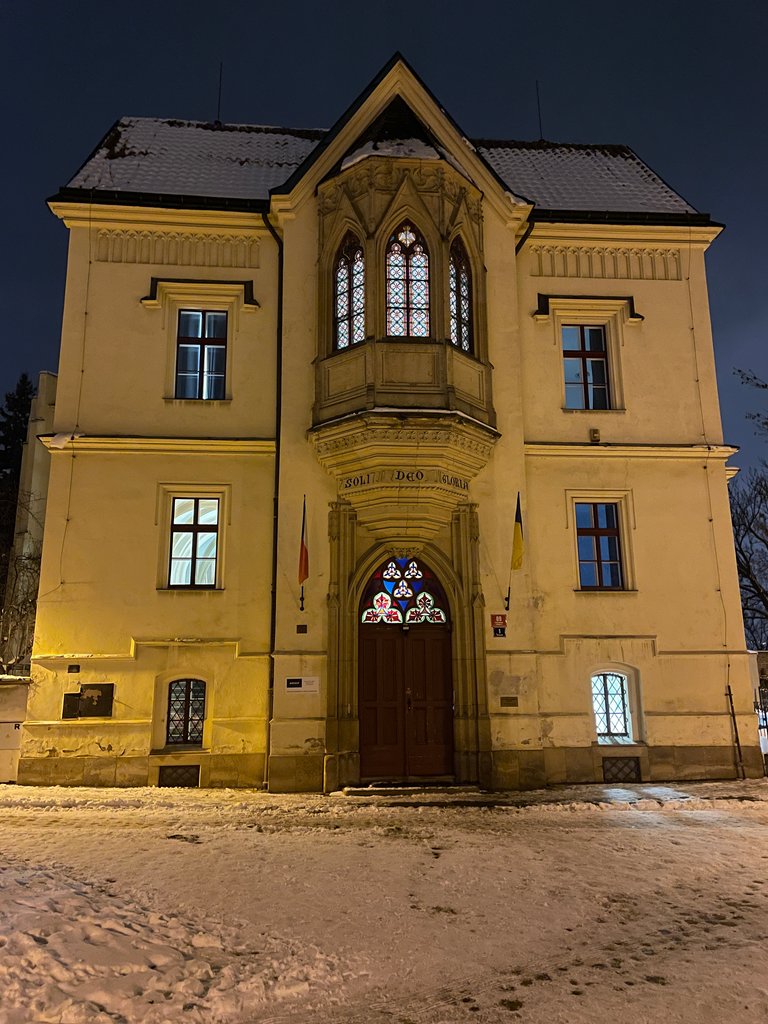
According to legend, a priest from Vyšehrad made a pact with the devil named Zardan, gambling for the life of a woman possessed by the devil. He pledged his soul to the devil if he could bring a stone pillar from St. Peter's in Rome before the priest finished Mass. The devil found this proposition too tempting to resist and accepted the bet. Failing to win, he angrily slammed the column to the ground, causing it to shatter into three pieces.
It's worth noting that the stone has no origin in or around Prague, and on particularly hot summer days, it emits a scent of sulfur. Could the legend be true?
According to classical archaeology, it is a pre-Christian monolith utilized for astronomical purposes, dating back to sometime between the 5th and 10th centuries AD. But that's too boring, isn't it?
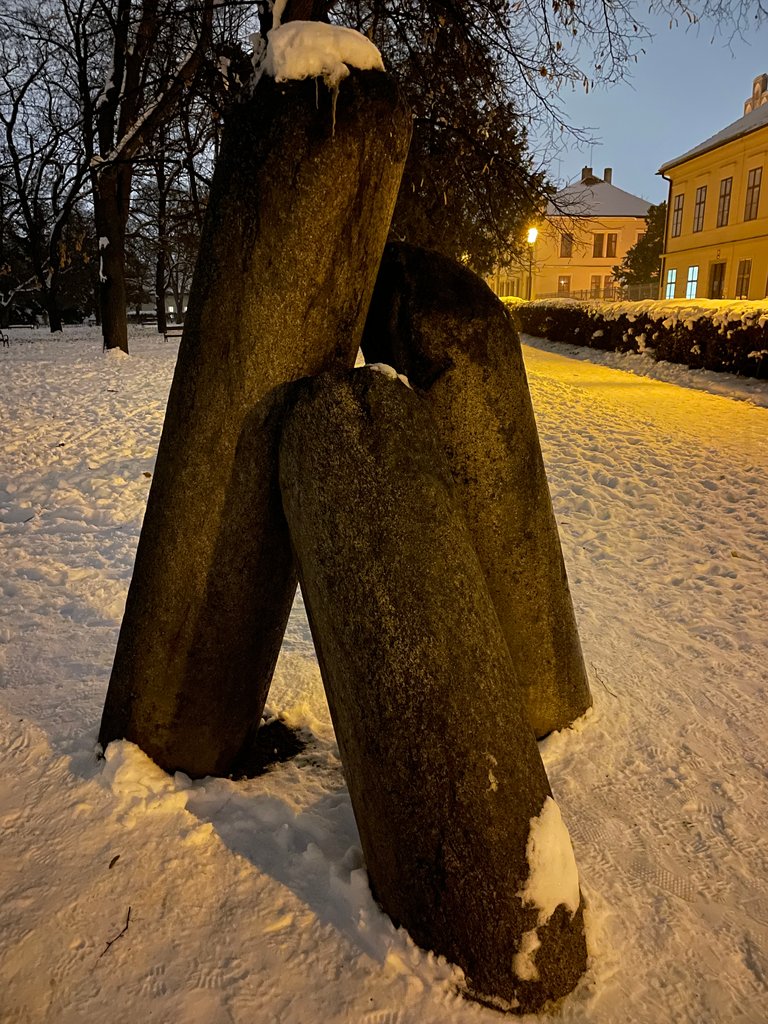
St. Adalbert of Prague

The New Dean Residence
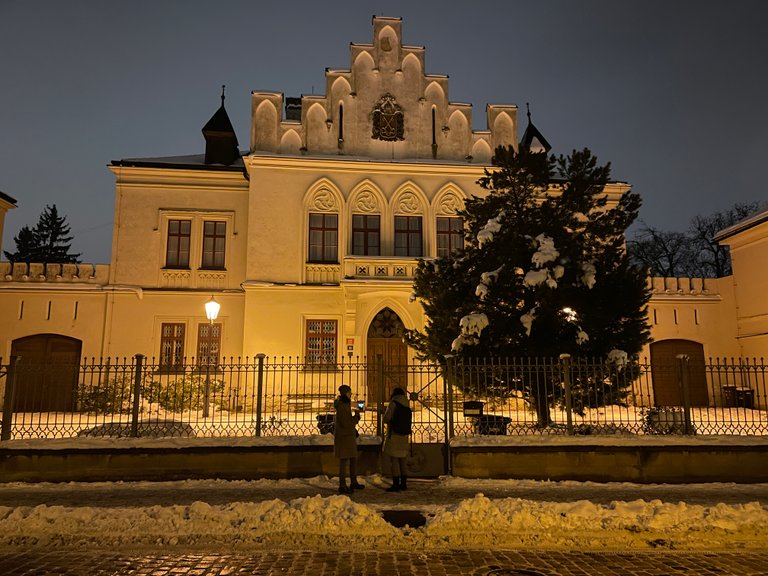
Here, I returned to the rotunda, ready to walk down a somewhat slippery slope towards the northern gate, Cihelná brána. Finished in 1842, it also acts as an entrance to the Casemate. These underground passages extend for several kilometers throughout all the walls and are accessible during the tourist season.
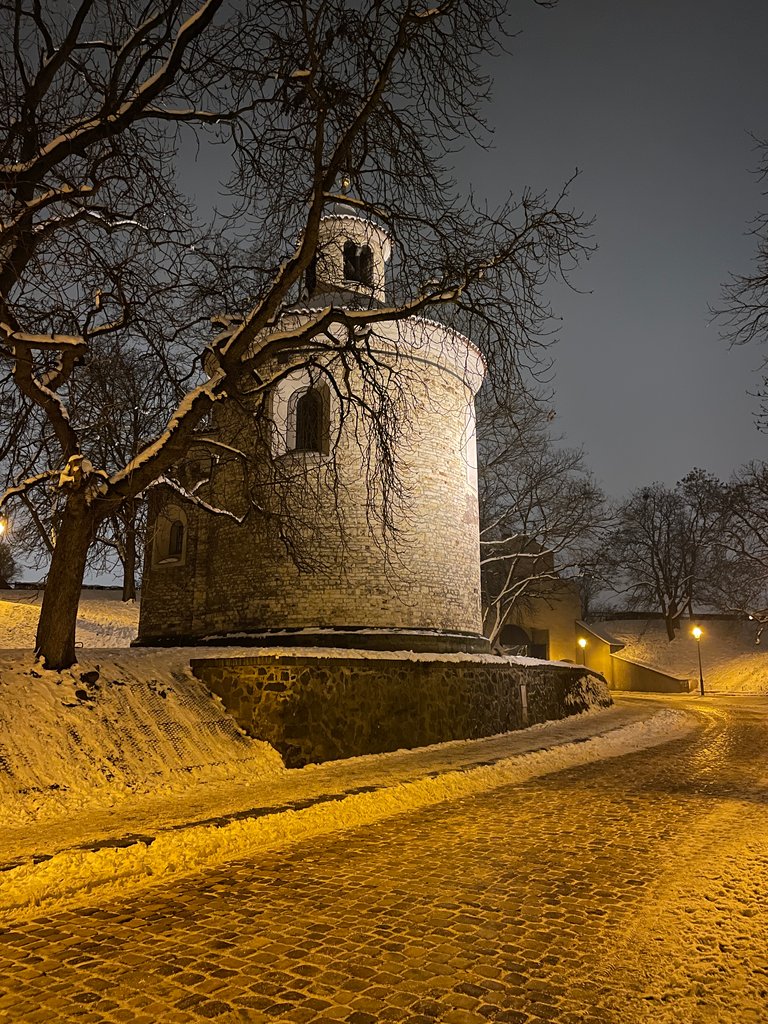
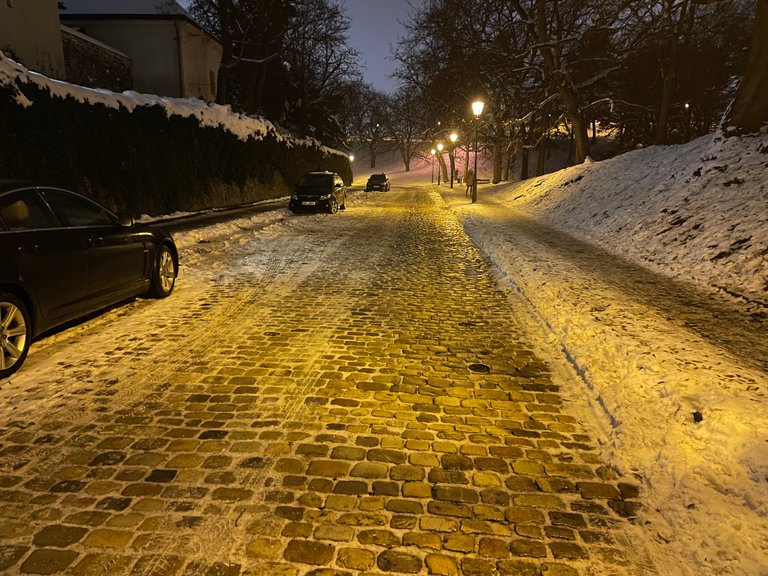
"Cihelná brána" translates to Brick Gate. To the best of my knowledge, it stands as the sole feature of Vyšehrad in the Empire style.
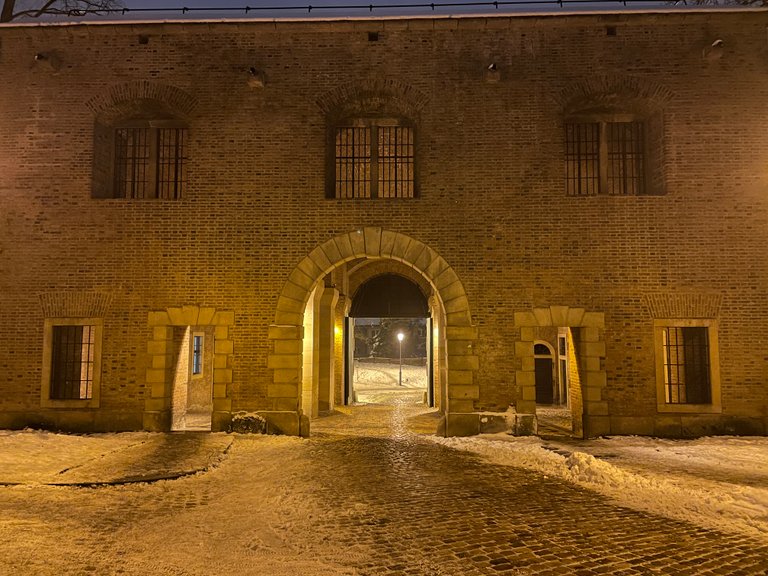

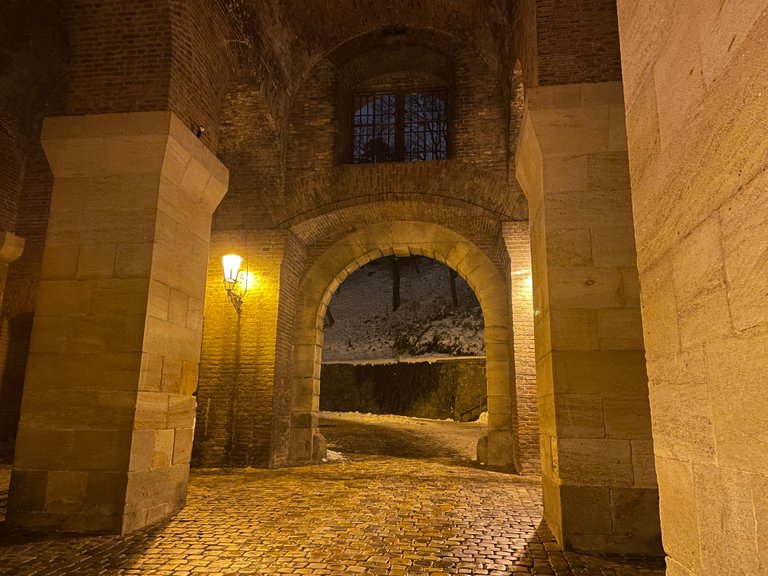
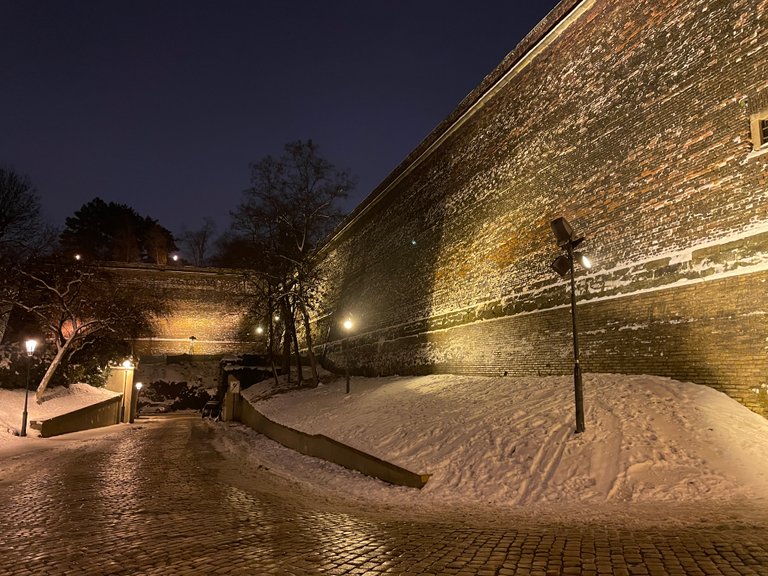
And that could be it. But it's not, because I'll take you to the river under Vyšehrad rock. And on that occasion, I have a unique world experience for you. This triplex was built in 1912-13 in the cubist style. Yes, it really is cubism, and Prague is perhaps the only city that can boast several realizations. Here, in a somewhat secluded spot between the river and the rock, architecture lovers from all over the world stop by.
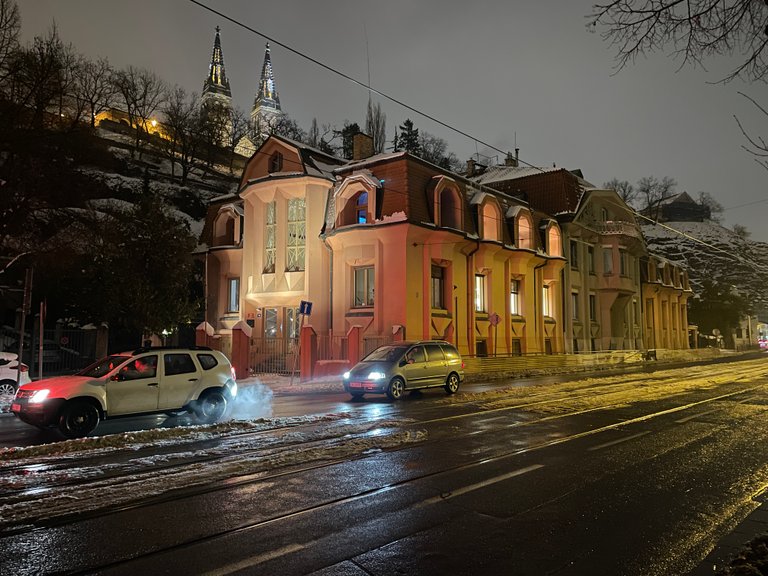
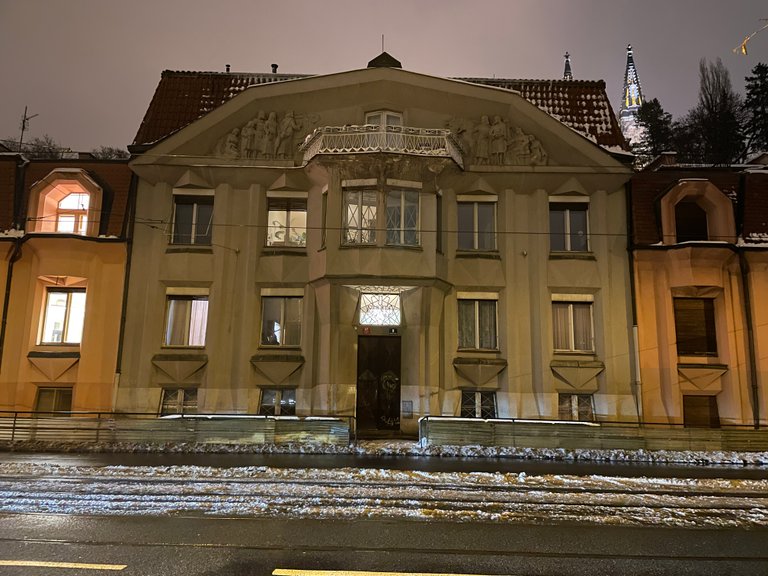
My path leads to the rock, though. A few weeks ago, I shared the legend of Horymír (well, yes, it was a beer-related post. How did you know?), who, riding his faithful horse Šemík, jumped off the Vyšehrad rock to escape from his execution. Allegedly, he jumped from where the ruins of the watchtower now stand. The tunnel dates back to 1905.
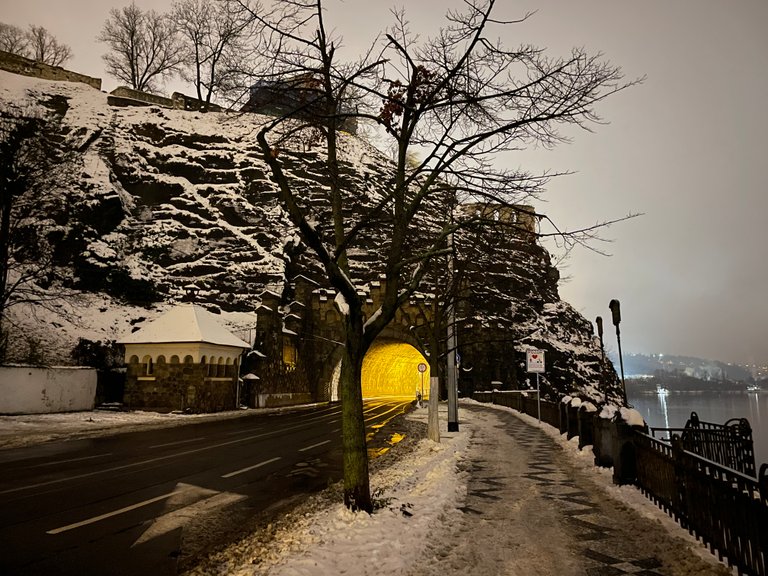

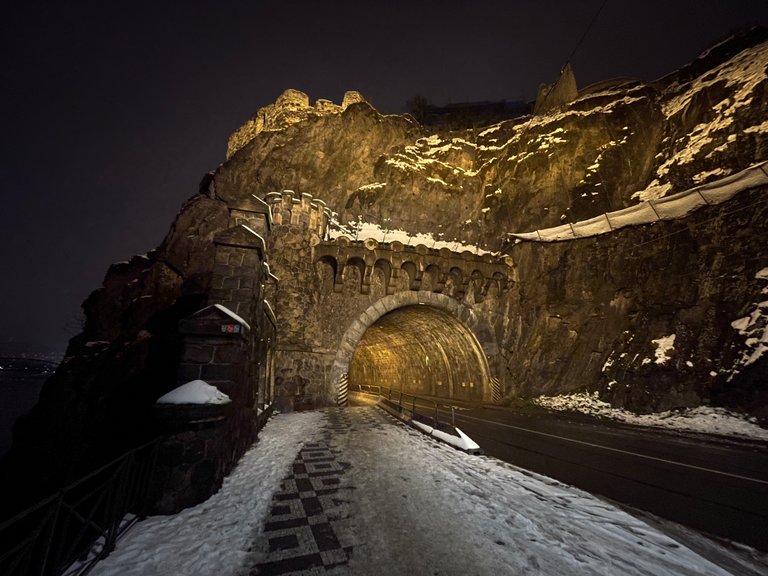
It is high time to bid farewell to Vyšehrad with its massive walls, hop on the tram, pass through the tunnel, and head somewhere warm. See you next Wednesday!
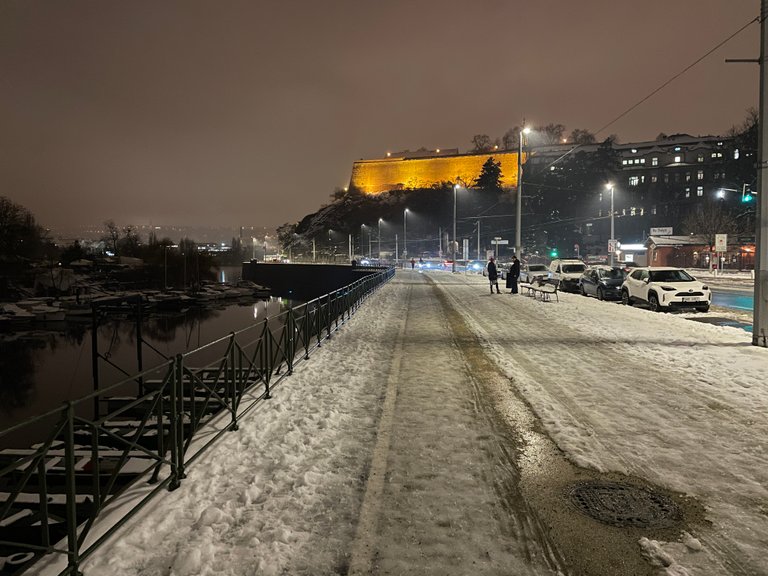
This post is for #wednesdaywalk by @tattoodjay :)


